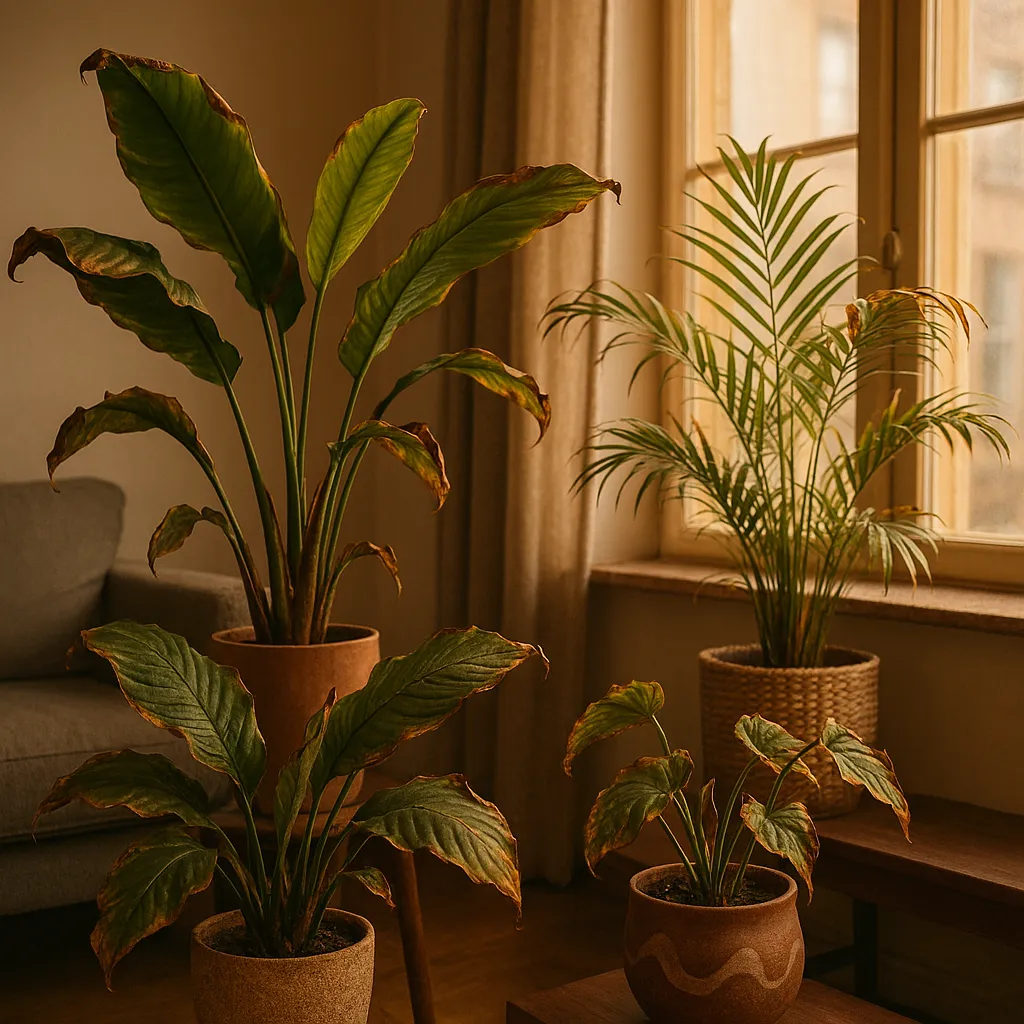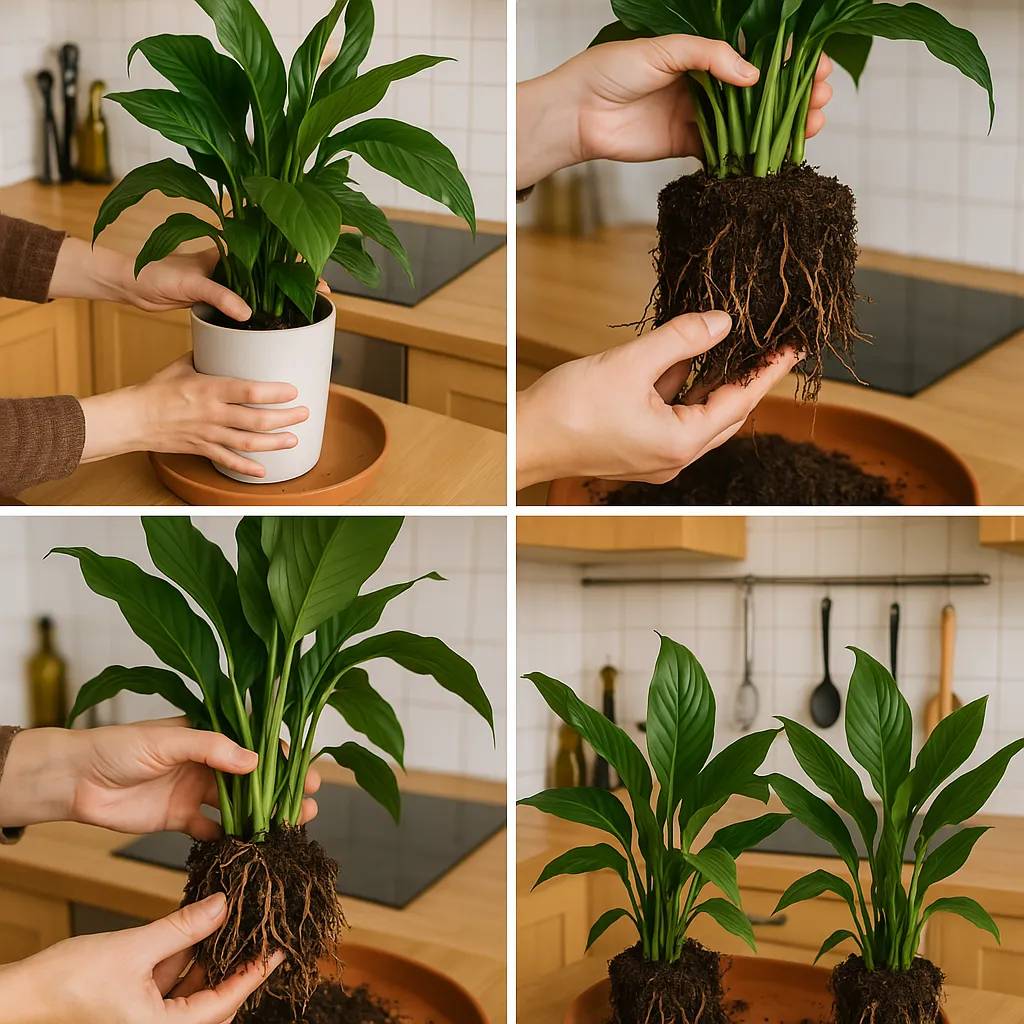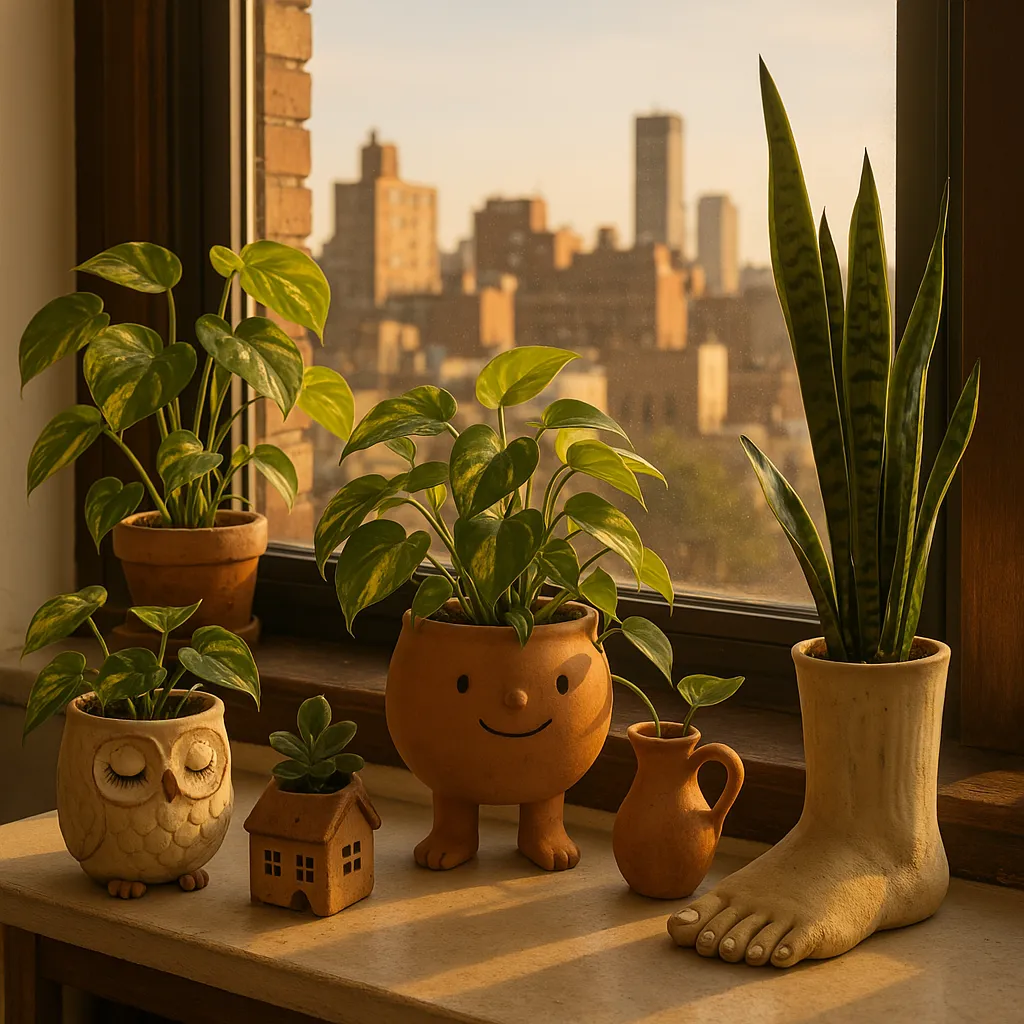
Sage T.
Indoor Gardening & Plant Care
Welcome to Your Plant Parent Journey
If you’ve ever admired a lush windowsill or scrolled past dreamy indoor jungles on social media, but felt overwhelmed about where to start, you’re in the right place. Whether you’re working with a cozy apartment, a rental with strict rules, or just a single sunny shelf, indoor gardening for beginners doesn’t have to be complicated—or expensive. I know firsthand how confusing it can be to figure out which tools you actually need and which ones are just nice-to-haves. That’s why I’ve created this plant parent starter kit: a practical, budget-friendly, and space-saving guide designed especially for apartment plant care. Together, we’ll break down the essentials, clear up the confusion, and help you grow your confidence (and your plants!)—no green thumb required. Let’s make your indoor plant journey simple, joyful, and totally doable.
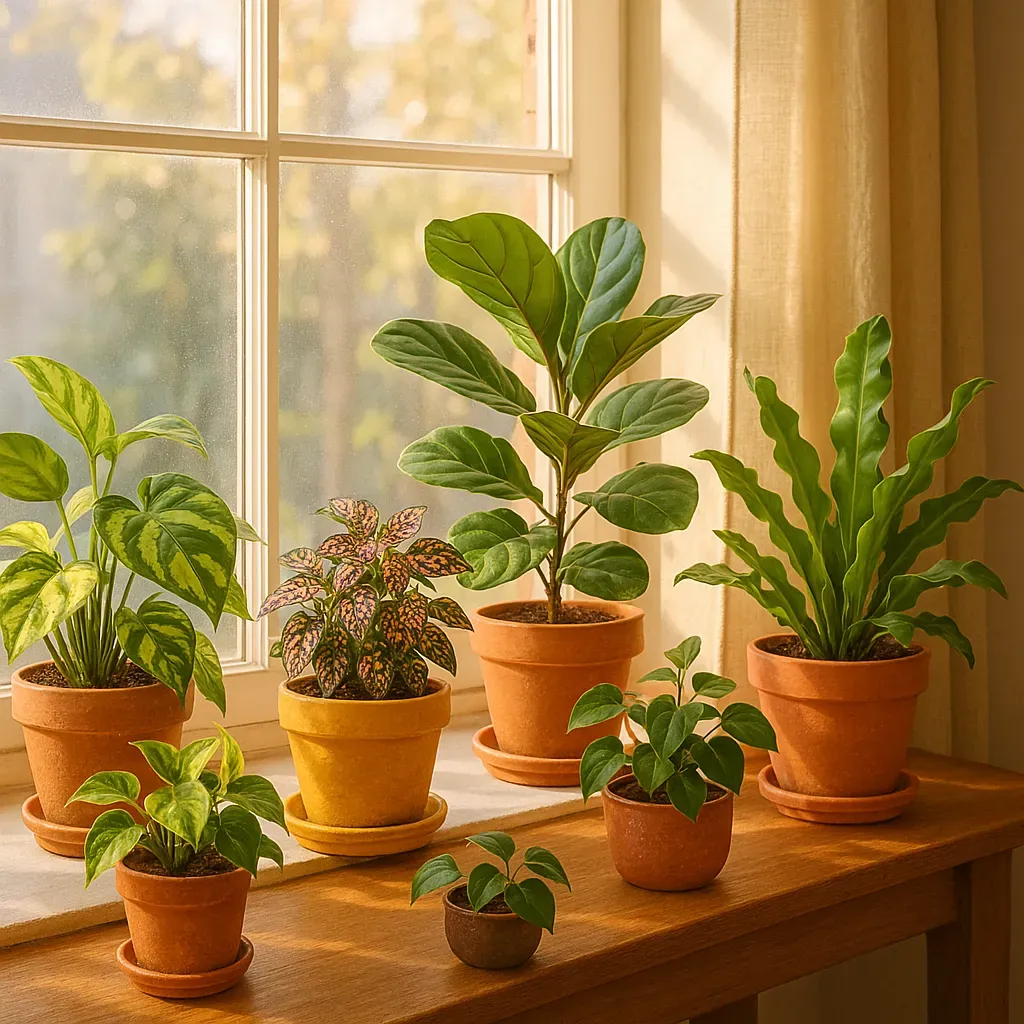
Affiliate Disclosure & Testing Methodology
Some links in this post are affiliate links, which means I may earn a small commission if you make a purchase—at no extra cost to you. Every product I recommend has been personally tested in my own apartment, often over several months, and evaluated for durability, ease of use, and real-world results. I skip the hype and only suggest tools that have genuinely improved my plant care routine.
Why You Don’t Need a Jungle of Tools
It’s easy to feel overwhelmed by the sheer number of gadgets and gizmos marketed to new plant parents. From specialized misters to high-tech soil sensors, the world of indoor gardening gear can seem like a jungle in itself. But here’s the truth: minimalist plant care is not only possible—it’s often the best approach, especially for urban gardening beginners.
When I first started growing plants in my apartment, I fell for the myth that more tools meant better results. I once bought a set of self-watering globes that promised to “water while you’re away”—only to find my pothos sitting in a puddle while my snake plant stayed bone dry. After years of testing everything from fancy pruning shears to Bluetooth soil meters, I’ve learned that a few beginner plant tools are all you really need. For most indoor gardeners, a basic watering can, a pair of sharp scissors, and a small trowel cover nearly every task. These urban gardening essentials are affordable, easy to store, and perfectly suited for small spaces.
Don’t let glossy ads convince you that success depends on a crowded toolkit. Instead, focus on simplicity and budget-conscious choices. By starting with just the basics, you’ll save money, avoid clutter, and have more energy to enjoy your plants. As your confidence grows, you can always add a tool or two that truly fits your needs—but for now, less really is more.
The Essential Plant Parent Checklist
Starting your indoor plant journey doesn’t require a green thumb or a big investment—just a few reliable tools. Here’s my tried-and-true checklist of apartment gardening supplies that form the backbone of any indoor plant toolkit. Each item is beginner-friendly, space-conscious, and budget-wise, making plant care basics easy for everyone. I’ve included notes from my own experience using each tool, so you know exactly what to expect.
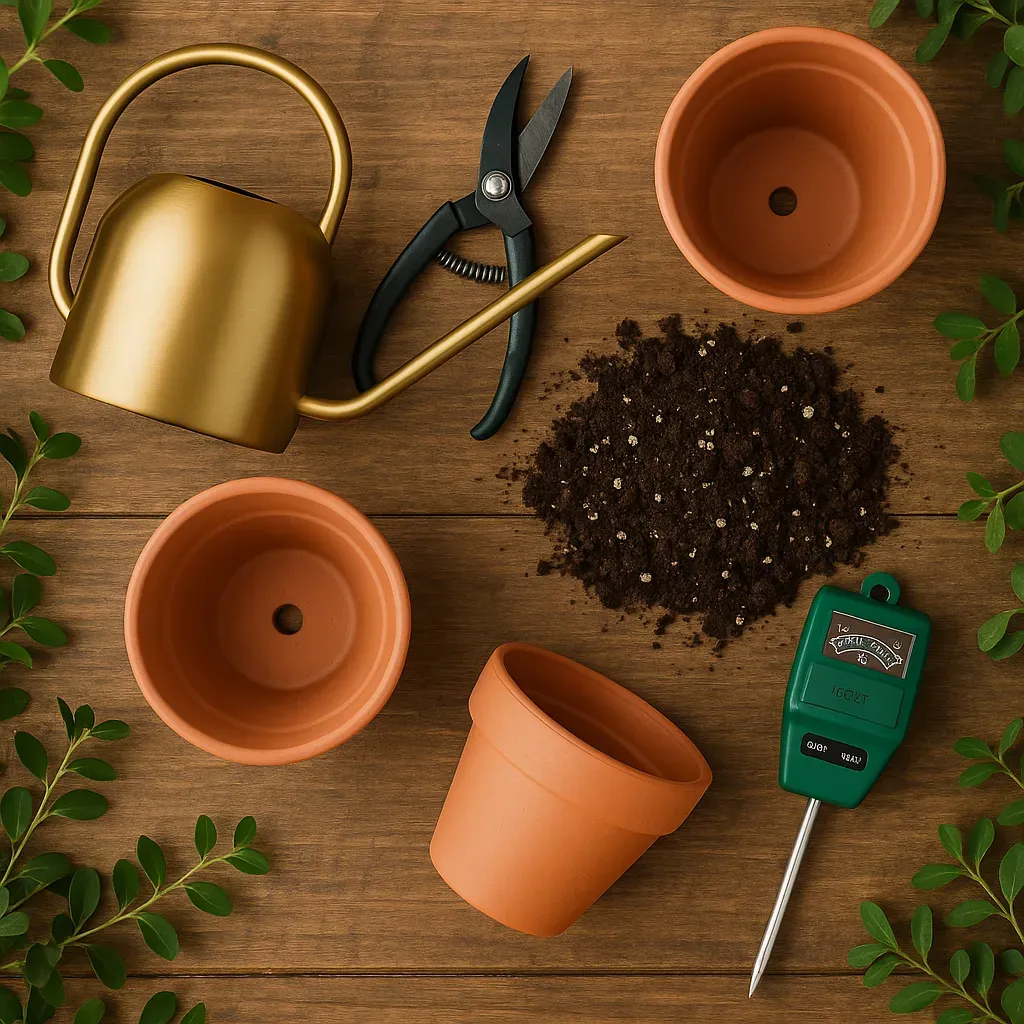
Watering Can (with a narrow spout):
- Tested pick: I’ve cycled through at least five watering cans, from dollar-store plastic to a sleek stainless steel model. The winner? A lightweight plastic can with a long, narrow spout (under $10). It lets me water crowded shelves without drenching the floor, and after two years, it’s still leak-free. Stainless steel looks great but is heavy when full and prone to rust if left damp. If you’re looking for a reliable option, the Haws Watering Can Handy 1.5G Gr 169/1.5 is a classic, durable choice that’s easy to maneuver around crowded shelves.
Pruning Shears or Scissors:
- Tested pick: For the first year, I used regular kitchen scissors, which dulled quickly and sometimes crushed stems. Upgrading to a pair of Fiskars Bypass Garden Pruners M, X-series PowerGear, P921 was a game-changer: cleaner cuts, less plant stress, and they’ve stayed sharp through dozens of trims. For a more budget-friendly but still reliable option, the Shark-Tuff® Heavy Duty Secateurs & Pruning Scissors are also a solid pick for everyday trimming.
Pots with Drainage Holes:
- Tested pick: I once tried those trendy ceramic pots without drainage (they looked so good on Instagram). Big mistake—my peace lily’s roots rotted within weeks. Now, I only use pots with drainage holes, and I add a saucer underneath to catch excess water. Stackable plastic pots are great for tight spaces, and I’ve reused the same set for three years with no issues. For a versatile and durable option, these Plant Pots with Drainage Holes and Trays are ideal for both indoor and outdoor use. If you want a modern look, the FORAGIFT 8 Pack Plant Pots Indoor set is stylish and practical.
All-Purpose Potting Mix:
- Tested pick: I’ve experimented with several brands, but Miracle-Gro Indoor Potting Mix consistently keeps my plants happy. It holds moisture without getting soggy, and I’ve noticed fewer fungus gnats compared to cheaper mixes. Skip garden soil—it’s too dense and can suffocate roots in containers.
Moisture Meter:
- Tested pick: I was skeptical at first, but a $10 analog moisture meter has saved me from overwatering more times than I can count. My calathea stopped getting brown tips once I started checking the soil before watering. It’s not 100% precise, but it’s far better than guessing or relying on the “finger test.” For a reliable and easy-to-use option, the XLUX Long Probe Deep Use Soil Moisture Meter is a great addition to your toolkit. Alternatively, the SUStee Watering Indicator for plants offers a visual, battery-free way to monitor soil moisture.
With these plant care basics in your indoor plant toolkit, you’ll be set up for success—no matter how small your space or how new you are to apartment gardening. Start simple, and let your confidence (and your plants) grow from there!
Honest Recommendations: What to Buy (and What to Skip)
When you’re just starting out with indoor gardening, it’s easy to get overwhelmed by the sheer number of gadgets and tools marketed as ‘must-haves.’ After years of testing everything from self-watering pots to soil meters, I’ve learned that a few well-chosen basics are all you need to set yourself (and your plants) up for success. Here’s my honest take on the best plant tools for beginners, plus a few you can skip for now.
Indoor Gardening Essentials: What You Really Need
Watering Can
- Budget pick: A simple plastic watering can with a narrow spout (under $10) is lightweight and easy to manoeuvre in tight spaces. My current one has survived two years of daily use and still pours smoothly. The downside? They can crack if dropped and sometimes leak at the seams, but I’ve only had one casualty so far. The Haws Watering Can Handy 1.5G Gr 169/1.5 is a great example of a classic, reliable design.
Pruning Shears or Scissors
- Budget pick: Clean, sharp kitchen scissors work just fine for most houseplants. They’re affordable and easy to find, but may dull quickly with frequent use. I went through three pairs in my first year.
- Premium pick: Precision pruning shears (like the Fiskars Bypass Garden Pruners M, X-series PowerGear, P921) offer cleaner cuts and last longer. After a year of use, mine are still sharp and make pruning a breeze. Worth the upgrade if you have a growing collection. The Shark-Tuff® Heavy Duty Secateurs & Pruning Scissors are also a great value for everyday use.
Potting Trowel or Small Scoop
- Budget pick: Repurpose an old spoon or buy a basic plastic scoop (under $5). It’s not glamorous, but it works for repotting small plants. I used a soup spoon for months before upgrading. If you want a full set of handy tools for repotting, the RoseFlower12 Pcs Mini Gardening Tools Set is compact and perfect for small-space gardening.
Plant Mister (Optional)
- Budget pick: Any clean spray bottle will do for misting humidity-loving plants. I used a $2 bottle for my ferns and it worked fine. Skip if your plants don’t need extra moisture. If you want a dedicated mister, the Driew Plant Mister, 10oz 300ML Water Spray Bottle is affordable and easy to use. For a touch of elegance, the HAWS V200 10-Ounce Plant Mister, Brass is a beautiful, long-lasting upgrade.
What to Skip (for Now)
- High-Tech Soil Sensors: I tested a Bluetooth soil sensor that sent alerts to my phone. Fun for a week, then I ignored the notifications and went back to my trusty analog meter. Most affordable models are unreliable or overkill for beginners.
- Fancy Grow Lights: Unless your space is truly dark, most beginners can get by with a sunny windowsill. I only added a grow light after my monstera started reaching for the window. Upgrade later if your plants struggle.
- Plant Food Sticks and Gimmicky Fertilizers: I tried slow-release sticks and “miracle” granules, but a balanced liquid fertilizer (diluted monthly) gave me the best results and healthier growth.
Bottom Line:
Start with a few affordable plant care gear basics and upgrade only as your collection (and confidence) grows. The best plant tools for beginners are the ones you’ll actually use—no need to fill your apartment with gadgets you don’t need. Focus on quality over quantity, and you’ll be well on your way to a thriving indoor jungle.
Optional Upgrades for Growing Collections
As your indoor jungle starts to flourish, you might find yourself ready to explore a few plant care upgrades that can make life as an apartment plant parent even more enjoyable. While none of these indoor gardening accessories are must-haves for beginners, they can streamline your routine and help your collection thrive—especially if you’re short on time or space.
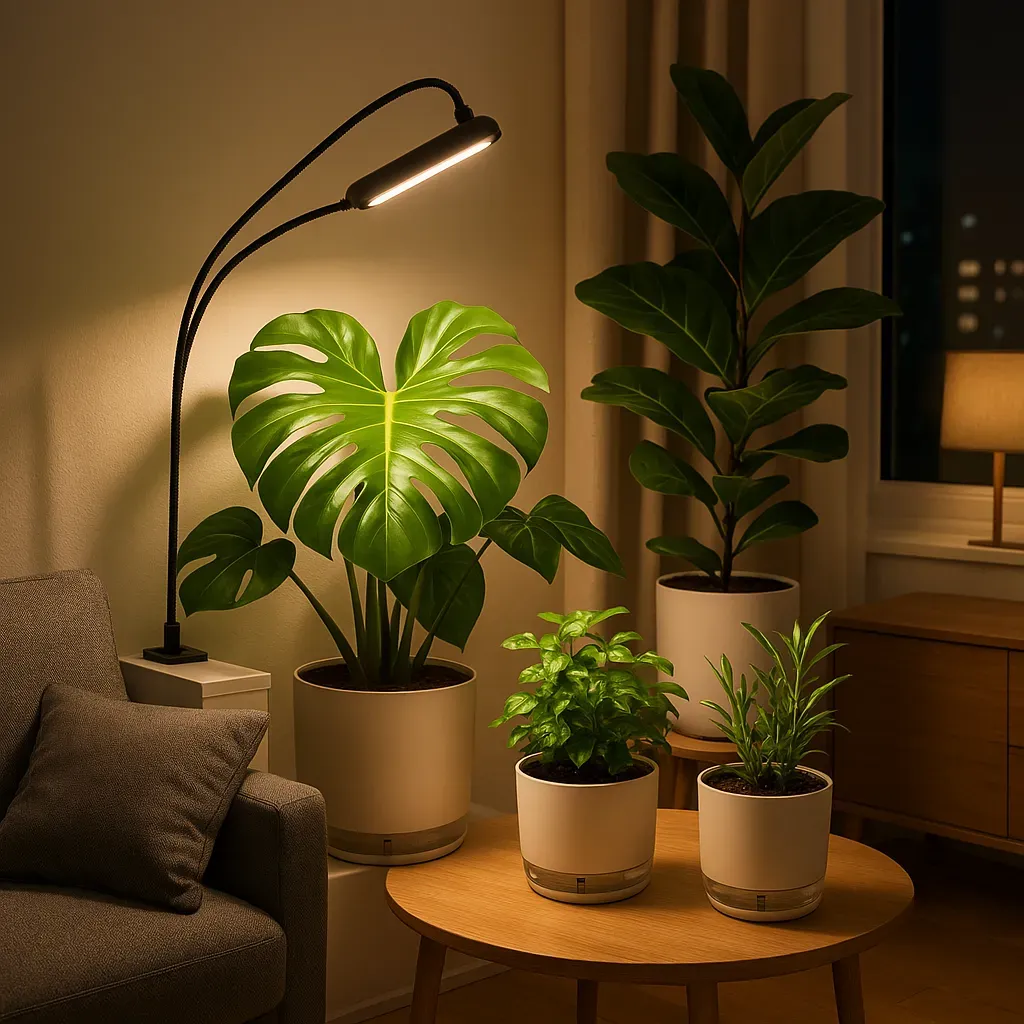
Self-Watering Planters: After testing several models, I’ve found that compact self-watering pots are a game-changer for busy schedules. My favourite is a stackable model from Lechuza; it kept my pothos perfectly hydrated for a week while I was on vacation, and the water reservoir is easy to refill. Just be sure to check the soil occasionally—some plants (like succulents) prefer to dry out between waterings.
Clip-On Grow Lights: If your apartment has limited natural light, a small, adjustable grow light can make a noticeable difference. I recommend clip-on versions—they’re affordable, easy to move, and don’t require permanent installation (a win for renters!). My spider plant perked up within two weeks of adding a $20 clip-on light to a dim corner.
Moisture Meters: For anyone still learning the art of not overwatering, a simple moisture meter takes the guesswork out of plant care. These tools are inexpensive, take up almost no space, and can help prevent common watering mistakes. My calathea’s leaves stopped browning once I started using one regularly. The XLUX Long Probe Deep Use Soil Moisture Meter is a reliable pick, and the SUStee Watering Indicator is a great visual alternative.
Mini Pruning Shears: As your collection grows, you’ll want to keep your plants looking their best. A pair of compact pruning shears makes trimming dead leaves or encouraging bushier growth quick and easy—no green thumb required. The Fiskars Bypass Garden Pruners are a favourite for their precision and comfort.
Remember, these apartment plant parent tips are just that—optional upgrades. Start with the basics, and as your confidence (and collection) grows, you can add tools that fit your space, budget, and lifestyle. Every thriving plant is a win, no matter how simple your setup!
Your First Steps: Building Confidence as a Plant Parent
Starting your indoor plant journey doesn’t require a green thumb or a sprawling garden—just a little curiosity and the right guidance. As someone who’s tested countless tools and starter kits in my own apartment, I can assure you: beginner plant care is more accessible than ever. Whether you’re working with a sunny windowsill or a cozy corner, you already have the essentials to nurture your first leafy companion.
Begin by assembling a simple apartment plant parent starter kit: a reliable watering can, a pot with drainage, and a bag of quality potting mix. Don’t stress about fancy gadgets or expensive planters—practical, budget-friendly options work just as well (and I’ve tested plenty to prove it!). Next, choose a forgiving plant like a pothos or snake plant—both thrive with minimal fuss and are perfect for building indoor gardening confidence. My first pothos survived three missed waterings and a month in a north-facing window—proof that you don’t need perfection to succeed.
Remember, every plant parent starts somewhere, and small successes—like spotting a new leaf or keeping your first plant happy—are worth celebrating. If you’re ready to take the next step, explore our beginner guides or check out my tested recommendations for easy-care plants and tools. You’ve got everything you need to transform your windowsill with these essentials. Find your perfect plant match and let your indoor garden adventure begin!
